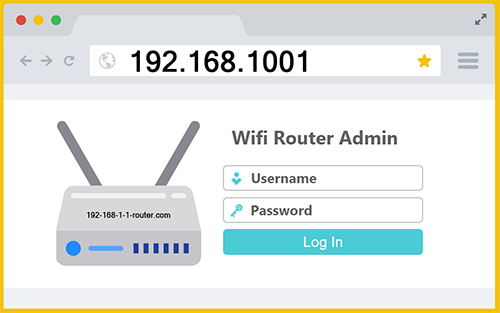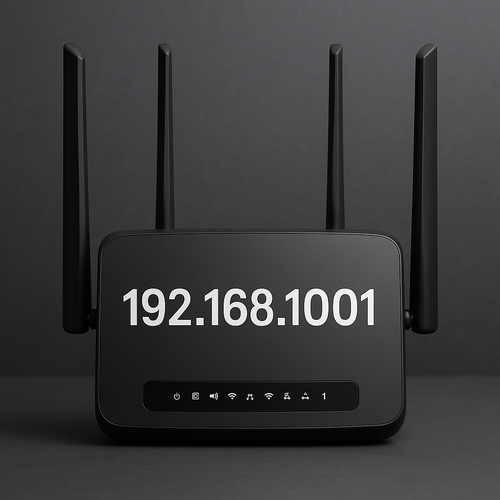192.168.1001
 Guide to 192.168.1001 Admin Login
Guide to 192.168.1001 Admin Login
The IP address 192.168.100.1 often serves as the default entry point for accessing a router’s administrative dashboard. Through this private gateway, users can log in to customize various network settings, including updating the wireless network name and securing the connection with a new password.
Finding 192.168.1001 Admin

Sadly, 192.168.1001 isn’t a valid IP address and won’t allow you to reach your router’s admin settings. Attempting to visit https://192.168.1001 will fail to connect to your Wi-Fi router’s login page. To properly access your router’s configuration menu, either click the button below or type “192.168.100.1” directly into Chrome or Safari’s address bar.
Probable username: admin
Probable passwords: admin or password
In most cases, you can open your router’s admin panel from any device connected to your home network. This includes iOS and Android smartphones as well as computers running Windows or macOS. A common mistake people make when trying to access their router is entering 192.168.1001 as the IP address. Unfortunately, this is incorrect because it lacks the proper formatting… IP addresses require periods between each set of numbers. As a result, using 192.168.1001 will always fail.
192.168.100.1 vs. 192.168.1001
When someone types 192.168.1001 into Chrome’s address bar, instead of accessing the router’s admin login page, they receive Google search results (SERPs). This happens because 192.168.1001 isn’t a valid IP address format. Specifically, valid private IPv4 addresses are structured into four numeric segments, known as octets, each separated by a period. Because 192.168.1001 is missing a period (.) between the numbers 100 and 1, Chrome interprets this as a regular query rather than an IP address.
Chrome, like most modern browsers, defaults to performing a web search when it encounters anything typed into the address bar that doesn’t meet standard URL or IP address formatting criteria. Firefox and Safari do the same thing. Therefore, entering an incorrectly formatted IP address, such as 192.168.1001, causes Chrome to trigger an online search instead of attempting to directly connect to a local router. This explains why the search engine results page (SERP) appears rather than the router login interface you were expecting.
To properly reach your router’s admin panel, you must correct the IP address formatting by adding the missing period. The correct and valid address is 192.168.100.1 which is one of the most popular private IPs for routers. In a nutshell, by adding a single period you can turn IP 192.168.1001 (which is erroneous) into IP 192.168.100.1 (which is legit). After correcting this formatting issue, Chrome should recognize it as a legitimate local network IP address and connect you directly to your router’s admin login page.
Routers and ISPs Using 192.168.1001
Several prominent router manufacturers commonly use 192.168.100.1 as their default admin IP address. Brands such as Huawei, Arris, and Technicolor frequently configure routers or cable modems to utilize this IP, providing an easy gateway for users to access settings like Wi-Fi network configuration, security adjustments, and firmware updates. This uniformity helps simplify network management for home users who rely on routers from these well-known manufacturers.
Major telecom providers around the globe also distribute devices with 192.168.1001 as the default admin IP to their subscribers. For example, in North America, providers like Spectrum and Xfinity (Comcast) frequently supply customers with Arris modems and routers using this address. Additionally, ISPs such as Vodafone in various countries often deploy Huawei or Technicolor routers configured to use 192.168.1001 (which is one reason this IP address is widely recognized among nerds worldwide).

Midnight Maintenance: Why Your Router Acts Strange at Night
Believe it or not, some 192.168.1001 routers automatically run scheduled maintenance tasks like firmware updates, bandwidth optimization, or even background diagnostics during off-peak hours. This is usually done late at night. If you try logging into your router’s admin panel while one of these processes is running, you might experience slower load times, temporarily disabled menus, or even see slightly different interface elements. This isn’t a sign your router is broken, it’s simply doing behind-the-scenes work to keep your network stable. If something looks odd, try logging in again after a few minutes once the maintenance cycle completes.